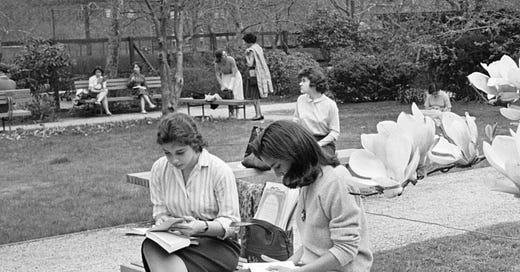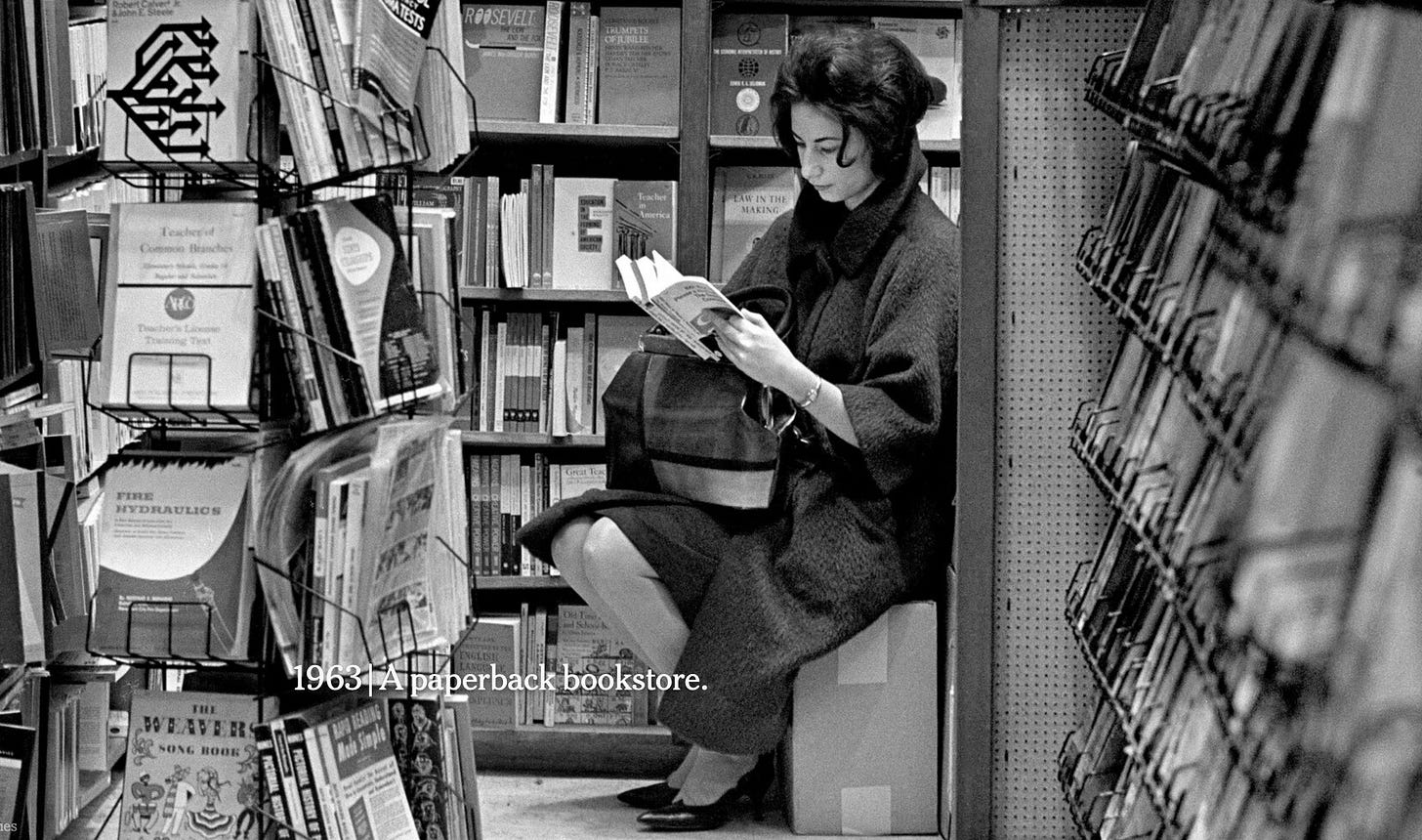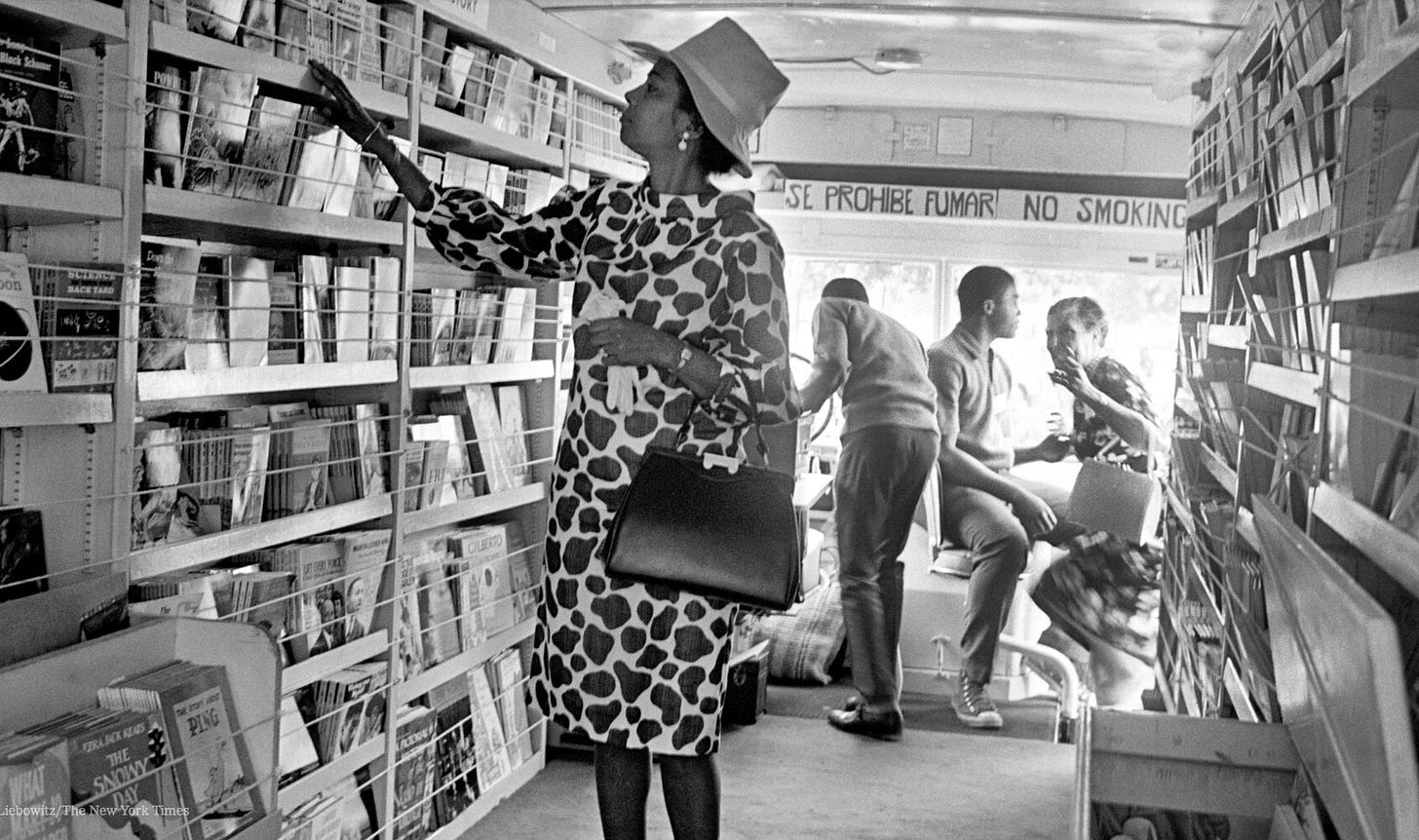Old Photos of People Reading in NYC
Why I can't stop looking at these pictures.
Yesterday was an eerie day in New York. Our skies turned yellow, apocalyptic even, and the children came out of school wearing face masks to protect them from the high levels of particulate from the Canadian wild fire smoke in our air. Even so, in between texts and phone calls about the strangeness of it all, I sat in my third-floor office plugging away on my latest draft of my next novel All the Summers In Between.
That’s when I hit on the oddest of inspiration. I was doing research about what the front page of the New York Post would have looked like in 1967. One of my characters in the book has her family’s secrets splashed on the front page — but I suddenly had a question. Was the tabloid headline something that you would have seen in the sixties? Did the Post have the same cheesy headlines that we know today? Or was it a more civilized paper like, say, The Washington Post?
That’s when I stumbled on these vintage photos of various people reading in bookstores in New York. These pictures interested me for a few reasons. One, you know the People magazine column: Stars They’re Just Like Us. These photos did something similar for me. They depicted people from a different era enjoying bookshops the way that I enjoy them, maybe even more so. 1960s Women: They’re Just Like Us!
But the photos also served as a reminder of how vital and widespread bookshops were back then. In 1969, dozens of bookstores lined Fourth Avenue. BookMasters, a paperback bookshop in Times Square, stayed open all night for “literate insomniacs.” Um, amazing.
Bookshops are vital now, too, of course. But the way people entertained themselves in the 50s and 60s was far simpler. You would go to sit in a movie theater where the latest blockbuster film was releasing. You’d browse the record store. You’d get tickets for a Yankees game. Okay, you might do all of these things today, too, but there are so many other forms of entertainment competing for your attention. Think of it this way: When were you last anxiously awaiting the release of a big movie, slipping into a red velvet seat in the theater and eating popcorn while eagerly waiting for it to begin?
For me, not in several years. (And the theater I was in probably smelled a little like sour milk.) When you’re at the Yankees game, many people are looking down at their phones in between hits. And the record store? Well, those are gone, too. Our focus is fractured.
But in these photos I can see New Yorkers with quiet minds. With intellectual minds that look more expansive than my mind sometimes feels. Even so, they are people who were facing many of the same problems we’re facing today: racism, political turmoil, unnecessary wars, income inequality. And they endured.
It’s not that I’m old fashioned or anything. You couldn’t pay me to go to back to the 1950s and 1960s. I write about that time period because I’m fascinated by the way that women were marginalized then, both at home and in their careers. It is not a happy time for many of my characters. But I do love slipping into an era between the pages where a woman might have donned a set of satin gloves to visit a bookshop. Or in later years, when she might have stood in the aisles of a music shop planning a protest march.
New York had the worst air quality of anywhere in the world yesterday. But its heart beat on. And maybe that’s why I love these photos so much. Because they show that no matter what is happening on this earth people persist. They escape. And they can always bury themselves in a really good book.
Do you see what I mean about these photos? I’m curious: Is there a time period that interests you?









Wow, I love these pictures. Thank you for sharing!
Lovely! Let’s go back. I lived in NYC on and off in the 60s (and then 70s and thereafter). I loved it it the 60s, waiting for the bus in a mini-skirt, not so mini as today, in the freezing cold, or in a straight skirt fairly snug—until the pant suit was “invented” and we could make faster strides to work. There were fewer preocupations. The world was smaller, even in New York.